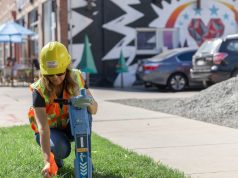A wealth of information and to act quickly on your feet is what satellite imagery empowers you with. With the benefit of precision, these imageries can help first responders of any crisis to assess the scope of damage and get another view of the scene.
This is the reason why governments and state bodies are increasingly using satellite imagery to tackle various issues, including disaster management like hurricane, earth quake, oil spills, etc.
In a recent incident where satellite imagery has extensively been used to control oil spill is in Corsica.
Role of satellite imagery in Corsica fuel spill
French and Italian maritime authorities have commenced cleaning a major spill that has spread 20 kilometers in the Mediterranean Sea after two cargo ships collided north of the island of Corsica on October 8
European Space Imaging captured a series of satellite images of the site on October 9 at 50 cm resolution with WorldView-2.

? 09/10/2018 by WorldView-2 © European Space Imaging
The vessels involved in the accident are the Ro-Ro Ulysse, owned and operated by the Tunisian shipping company Cotunav, which ran into the boxship CSL Virginia, owned by Cyprus Sea Lines while it was anchored about 30 km off the northern tip of the island causing upwards of 600 tonnes of fuel to be leaked.
Although it is still too early to determine exactly what happened, satellite imagery analysed from before and after the incident can provide key insights to assist the investigation process. Elaborating more on this, Adrian Zevenbergen, Managing Director of European Space Imaging says, “The benefit of satellite imagery is that the different spectral bands can be used to classify unidentified materials making it an invaluable source of information for maritime disaster management.”

What makes the whole maritime surveillance more effective is the use of satellite remote sensing. From providing initial detection and assessment for situational awareness to directing clean-up effort, very high-resolution satellite imagery is an additional asset as compared to traditionally-used radar-based oil spill detection technology. “Its ability to provide a detailed overview of the area plays a complimentary role in conducting on-going assessments and monitoring the extent of damage,” adds European Space Imaging’s Dr. Melanie Rankl.

Another very good example – Kerala Floods
In the recent past satellite imagery has played a crucial role in the Kerala flood rescue mission. The images were being captured from a distance of 400-800 kilometers from the Earth’s surface and then the data was analyzed and processed so that it became easy to predict the level of rainfalls in the next few hours and whether the situation would remain alarming.
Also Read #Kerala Floods: Geospatial technologies playing a crucial role in rescue and relief operations
Also watch




